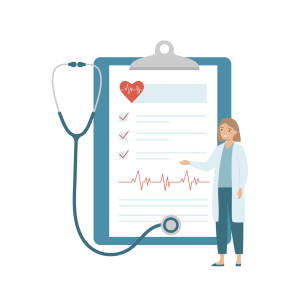In the ever-evolving world of healthcare, precision and accuracy are paramount. Clinical documentation stands at the heart of this, serving as the critical bridge between healthcare providers and patient care. In this blog post, we will explore the imperative for improvement in clinical documentation, a crucial area that has the potential to reshape the healthcare landscape. Let’s dive into the world of clinical documentation and discover why bridging the gap is an absolute necessity.
What is Clinical Documentation Improvement?
Clinical Documentation Improvement (CDI) is a crucial healthcare process aimed at enhancing the accuracy and completeness of patient medical records.
CDI specialists work with healthcare providers to ensure that clinical documentation accurately reflects a patient’s condition, treatment, and medical history.
This improved documentation leads to more accurate coding, billing, and better patient care, ultimately improving healthcare quality and reimbursement for healthcare facilities.
The Significance of Clinical Documentation
Clinical documentation is far more than a paperwork task; it’s the backbone of patient care. Accurate and comprehensive clinical documentation holds the key to patient safety, quality of care, and efficient healthcare operations. Here are some key aspects that highlight its significance:
Patient Care Continuity
One of the most critical functions of clinical documentation is ensuring continuity of care. When healthcare providers have access to complete and up-to-date patient records, they can make informed decisions, offer personalized care, and minimize the risk of errors. This is especially vital when patients are treated by multiple providers across different settings.
Legal and Ethical Compliance
Compliance with legal and ethical standards is non-negotiable in healthcare. Clinical documentation is often a legal requirement, and it plays a pivotal role in risk management. Inaccurate or incomplete records can lead to legal issues and compromise the reputation of healthcare institutions.
Data for Research and Analysis
Clinical documentation provides a treasure trove of data for research and analysis. It contributes to medical research, quality improvement initiatives, and the development of evidence-based practices. Inaccurate or inconsistent documentation can hinder these crucial activities.
Identifying the Gaps
To address the imperative for improvement, it’s essential to first identify the gaps in clinical documentation. Here are some common challenges that healthcare institutions face:
1. Incomplete Records
Incomplete documentation is a pervasive issue. Missing information, including vital signs, medications, allergies, and patient histories, can lead to errors, misdiagnoses, and inadequate care.
2. Lack of Standardization
Variability in documentation practices can result in confusion and errors. Standardizing the process can help ensure consistent, clear, and accurate records.
3. Data Entry Errors
Mistakes in data entry, such as typographical errors or incorrect data selection, can compromise the integrity of records. Ensuring accurate data entry is crucial.
4. Time Constraints
Healthcare providers often face time constraints that may lead to rushed or inadequate documentation. Finding ways to streamline the process without sacrificing quality is a challenge.
Bridging the Gap: Your Imperative for Improvement
Now that we’ve recognized the significance of clinical documentation and identified common gaps, let’s explore how to bridge these divides. Improving clinical documentation is not just a choice; it’s a necessity for patient safety and healthcare excellence. Here’s a roadmap for achieving this imperative:
1. Education and Training
Invest in education and training for healthcare professionals. Comprehensive training ensures that they understand the importance of accurate documentation and are well-versed in best practices. Continuous education can help keep them updated with the latest standards.
2. Standardization
Standardize documentation procedures across your institution. Create templates and guidelines that make it easy for healthcare providers to record information consistently and accurately. This reduces the chances of missing critical data.
3. Use of Technology
Embrace technology to streamline the documentation process. Electronic health records (EHRs) can automate many aspects of data entry, reduce errors, and improve efficiency. Additionally, EHRs can provide real-time access to patient records, ensuring that information is always up to date.
4. Interdisciplinary Collaboration
Encourage interdisciplinary collaboration. Communication between healthcare providers is essential for accurate documentation, especially when patients receive care from multiple specialists. Collaboration can help prevent duplication of tests and treatments.
5. Regular Audits and Feedback
Conduct regular audits of clinical documentation to identify areas for improvement. Provide feedback to healthcare providers on their documentation practices, focusing on both the strengths and areas that require enhancement.
6. Patient Involvement
Involve patients in their own care documentation. Encourage them to report their medical history, allergies, and medications accurately. Patients can play a significant role in ensuring their records are complete and up to date.
The Future of Clinical Documentation
The imperative for improvement in clinical documentation isn’t just a current need; it’s a vision for the future of healthcare. As technology continues to advance, opportunities for better and more efficient documentation will emerge. Imagine a future where clinical records are seamlessly integrated, instantly accessible, and consistently accurate.
Choose BHM To Improve Your Clinical Documentation Process
| Editor’s Note: BHM Healthcare Solutions offers case review and medical director expertise, business intelligence, software, CIA consulting services and accreditation support focused on improving patient care. Contact BHM for a brief discussion on how BHM achieves success. CLICK HERE |





